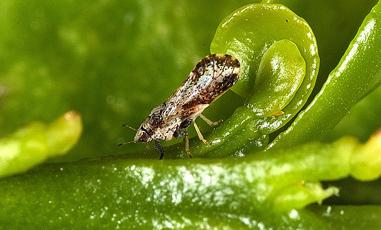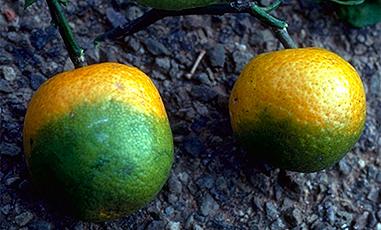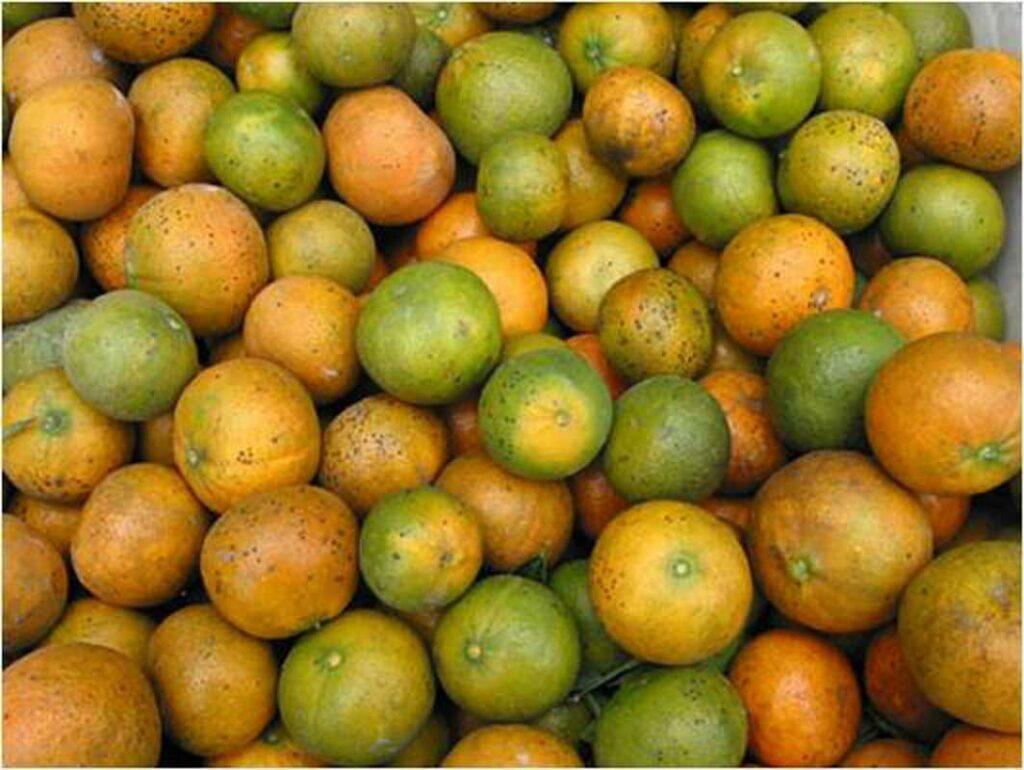The disease, known as citrus greening, yellow dragon disease or huanglongbing (HLB), is caused by the bacteria Candidatus Liberibacter spp.
The bacteria are spread from tree to tree by a small insect, the African and Asian citrus psyllid (Psyllidae spp.). Infected trees may not show any symptoms for months: the fruit becomes vestigial, greenish and inedible, ultimately followed by the death of the entire plant.





For a long time, the disease existed only in Asia and Africa. The disease has now been found in several US states, including California, Arizona, Texas and Florida. China, Mexico and Brazil are also struggling with the disease.
There is no cure for the disease. The main control method so far has been to remove infected trees and treat orchards with an insecticide to control the vector.
In the USA, since 2016, the US Environmental Protection Agency (EPA) has allowed growers to use two antibiotics, oxytetracycline and streptomycin, after completing an "emergency declaration". The EPA also approved the routine treatment of plantations with oxytetracycline in December 2018, allowing growers to spray trees with the antibiotic several times a year. The routine use of streptomycin has not yet been authorised.
The two antibiotics are also used in human medicine and have been used in small amounts in crop production (on cereals).
The routine uses of these products in agriculture, which can be several times the amount used in human medicine, is a concern for researchers and public health experts, who believe it might spur resistance in some human pathogens. They cite a previous case of a fungicide used in tulips in the Netherlands, which led to an increase in cases of resistant aspergillosis in immunocompromised patients.
Another argument against the use of antibiotics is that there is still little scientific evidence on the long-term effects of their use in crop production and their effectiveness in controlling infection. Field trials to date have produced mixed results. Antibiotics can slow down the development of the disease, but they cannot eliminate it. There are also questions about what other side effects the treatment might have, such as killing other beneficial bacteria. A study on the uptake, translocation and stability of the two antibiotics in citrus plants was published in 2019.
There might be some hope according to a news story published in 2020. The researchers found a peptide in the fruit of the Australian finger limes that can kill the bacteria causing the disease. If further trials prove successful, the peptide could be an effective and environmentally friendly solution, but it can be years before the product gets to market.
The disease has not yet emerged in Europe and the use of antibiotics to control plant pathogens is banned in the EU, but the case should be monitored.
Frissítés:
